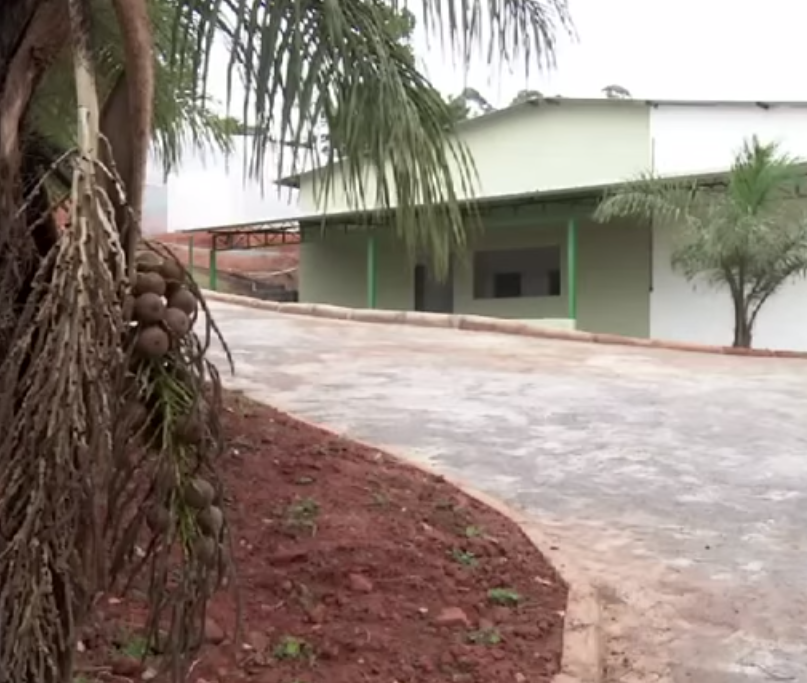COP27 reaches historic agreement on losses and damage, but leaves to be desired in the fight against global warming
segunda-feira, novembro 21, 2022
The 198 COP27 participating countries reached an agreement in the early hours of Sunday, two days after the date that the conference should have ended in the Egyptian city of Sharm el-Sheikh, to set up a fund on loss and damage. It is an unprecedented decision at climate conferences, although vague terms that will leave the details for next year and advances below what is necessary to combat the causes of global warming.
Voted in a plenary session at 4 a.m. in the Egyptian city of Sharm el-Sheikh (11 pm Saturday in Brazil), the text provides for "the creation of new financing mechanisms to help developing countries that are particularly vulnerable to the adverse effects of climate change." The details of the language, however, were part of what made the 12-day meeting go beyond the deadline, something of a regular at climate conferences.
The proposal also mentions the search for "new financial arrangements," going against the U.S. initiatives released at COP27 —carbon markets and a mix of sources that could include multilateral banks and insurers. The issue is gaining increasing urgency after the costs of extreme weather events exceeded $220 billion this year.
— COP27 has done what no other country has achieved, creating a loss-and-damage fund to support the communities most impacted by climate change. This was something countries have demanded since the 1992 Rio Earth Summit -- said activist Mohamed Adow, executive director of the NGO Power Shift Africa. — After 30 years of pain, climate action is finally coming home on African soil here in Ephito.
A loss and damage fund was placed as one of the central issues of this COP, but also one of the thorniest and most difficult to approve. The United Kingdom and the European Union have historically opposed the creation of the mechanism, a demand of more than three decades of the most vulnerable countries, fearing that it would equate to an admission of guilt and open the door to billion-dollar requests for reparations.
Disagreements
The most vulnerable countries defended the measure, pointing to the fact that they are responsible for a tiny share of greenhouse gas emissions, but those most affected by their impacts. They point to the fact that the largest historical emitters are industrialized countries, whose wealth in recent decades has come at the expense of air pollution.
The text also creates a "transition commission" for the operationalization of the mechanism and the terms of access and potential resources —details that will be formalized at COP28, which will take place in November 2023 in the United Arab Emirates. Among its functions will be "identifying and expanding sources of funding", a key issue.
Developed countries demand that emerging economies that emit more and more greenhouse gases, such as China and India, also open their pockets. It was a particular message to the Chinese, now responsible for 27% of all planetary emissions, far more than the approximately 12% of Americans in second position.
In the understanding of emerging countries, however, resources for loss and damage have to come from the richest countries and historically responsible for the highest emissions. The G77 group plus China -- which actually encompasses 134 developing nations and negotiates together in THE COPs to put pressure on the wealthiest nations -- points to the terms of the 1992 Climate Convention. By the rules, the developed have a duty to lead the actions and those in development can help, but with differentiated responsibilities.
"A fund for loss and damage is essential -- but it is not the answer if the climate crisis sweeps a small island state off the map or turns an entire African country into a desert," U.N. Secretary-General António Guterres said in a statement. "The world still needs a giant leap in climate ambition. The red line that we should not cross is the line that takes our planet beyond the temperature limit of 1.5ºC."
With the mechanism in the process of implementation, other modest resources for loss and damage came from the so-called "Global Shield", which involves the proposal of the world's richest economies, the G7, and some other commitments, collective or individual. The main mechanism has about 200 million euros available, but only the torrential rains that hit Pakistan this year have caused damage of $30 billion, it is estimated.
Debates still open
The promises are also seen with a back foot: they point, for example, to the already delayed $100 billion annual climate funding to be delivered between 2020 and 2025 -- something the document expresses "serious concern about." If the Glasgow paper, the headquarters of COP26, spoke of "at least doubling" the funding for adaptation, this year's speaks only of "increasing".
It calls for the first time, however, a "reform of the practices and priorities of multilateral development banks" so that they "align and increase financing" and facilitate access to funds. It is a reinforcement for increasingly forceful voices calling for a reform of the financial system in force since 1944, prepared by the US and its allies at the end of World War II, to be more effective in the face of the new times.
The discussions had not yet ended at 8am in Sharm el-Sheikh (3am in Brazil), but the latest drafts did not go beyond Glasgow in language to keep alive the hope of keeping the global temperature rise at 1.5ºC by 2100 compared to pre-industrial levels, a level considered borderline to avoid an environmental catacislimo. Unlike last year's COP resolution, which showed the theme as a mitigation solution, this year it is under the umbrella of science.
The document "reiterates" that the impacts will be "much smaller" if this occurs and "resolves" to seek further efforts to achieve the goal. It also "recognizes that limiting global warming to 1.5°C requires rapid, deep and sustained reductions in greenhouse gas emissions of 43% by 2030 compared to 2019 levels" —something that was not in the cop26 final document.
However, it was agreed to the creation of the "Glasgow Implementation Plan", which creates a work programme by 2030 to advance the implementation of emission reduction targets. It calls for countries that have not yet updated their voluntary targets to do so, but it does not go much further —as signed in the Paris Agreement, they are urged to make them more ambitious every five years. The first update was made in 2021.
Fossil fuels
The little progress with regard to fossil fuels in the drafts was poorly received. The text speaks of the "gradual reduction" in coal use and the "gradual abandonment of inefficient fossil fuel subsidies" - language similar to that of the pact signed last year in Glasgow. It also "emphasizes the importance of improving its clean energy matrices, including low-emission and renewable energies."
— The Egyptian Presidency produced a text that clearly protects states from oil and gas, as well as the fossil fuel industry. This trend cannot continue in the United Arab Emirates next year -- said Laurence Tubiana, one of the architects of the iconic and binding Paris Agreement of 2015.
The Egyptian presidency's reference to "low-emission energy" was seen as a gap for natural gas, whose shortage after Russian cuts triggered an energy crisis in Europe, caused the price of the product to go up and opened up a market opportunity for North African countries such as Egypt.
Countries that are major fossil fuel producers have drawn a red line in the most ambitious language. According to the list of UN-accredited names, there were 636 industry lobbyists in Sharm el-Sheikh.
Source: Um só Planeta




















0 comentários
Agradecemos seu comentário! Volte sempre :)